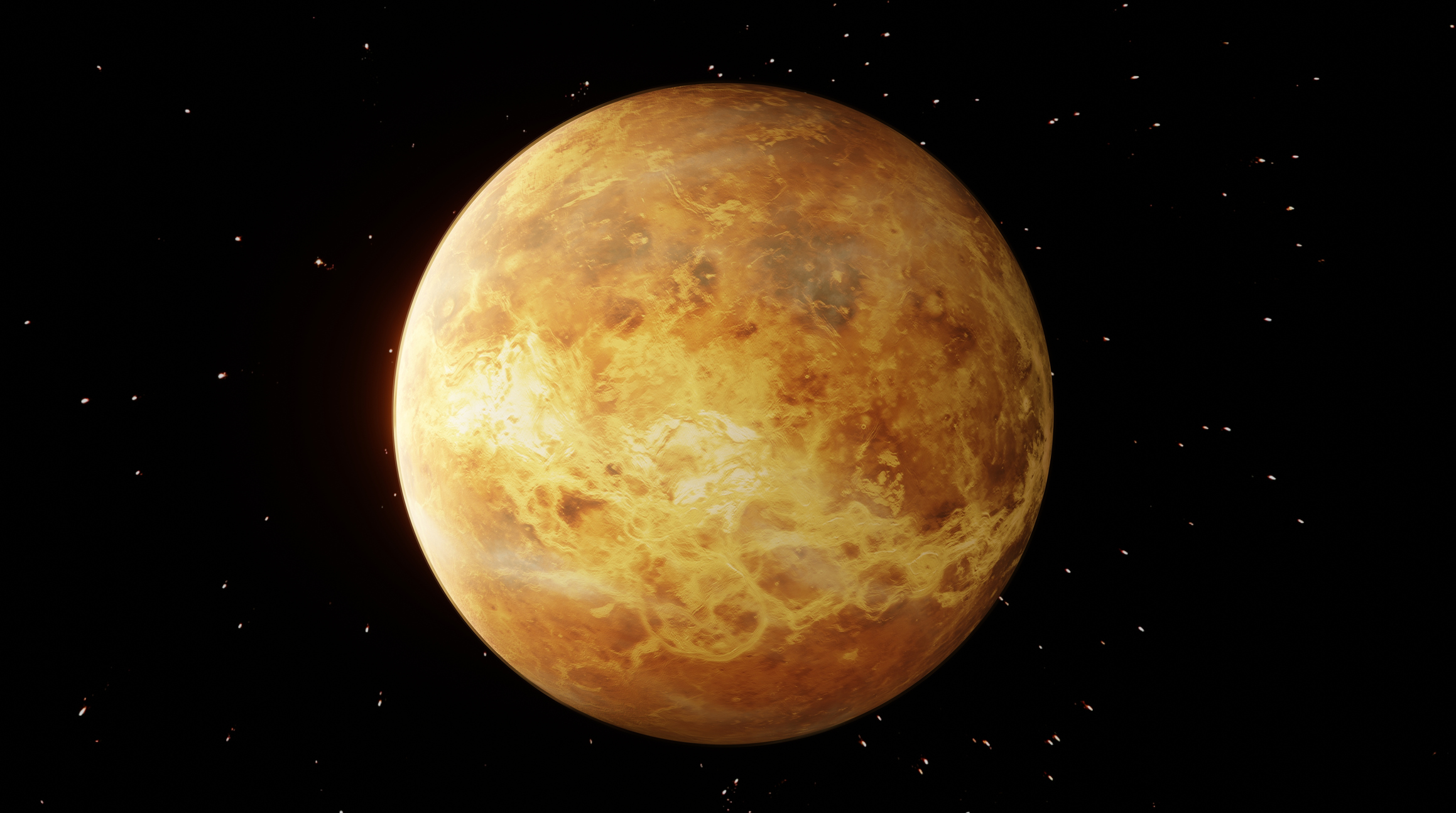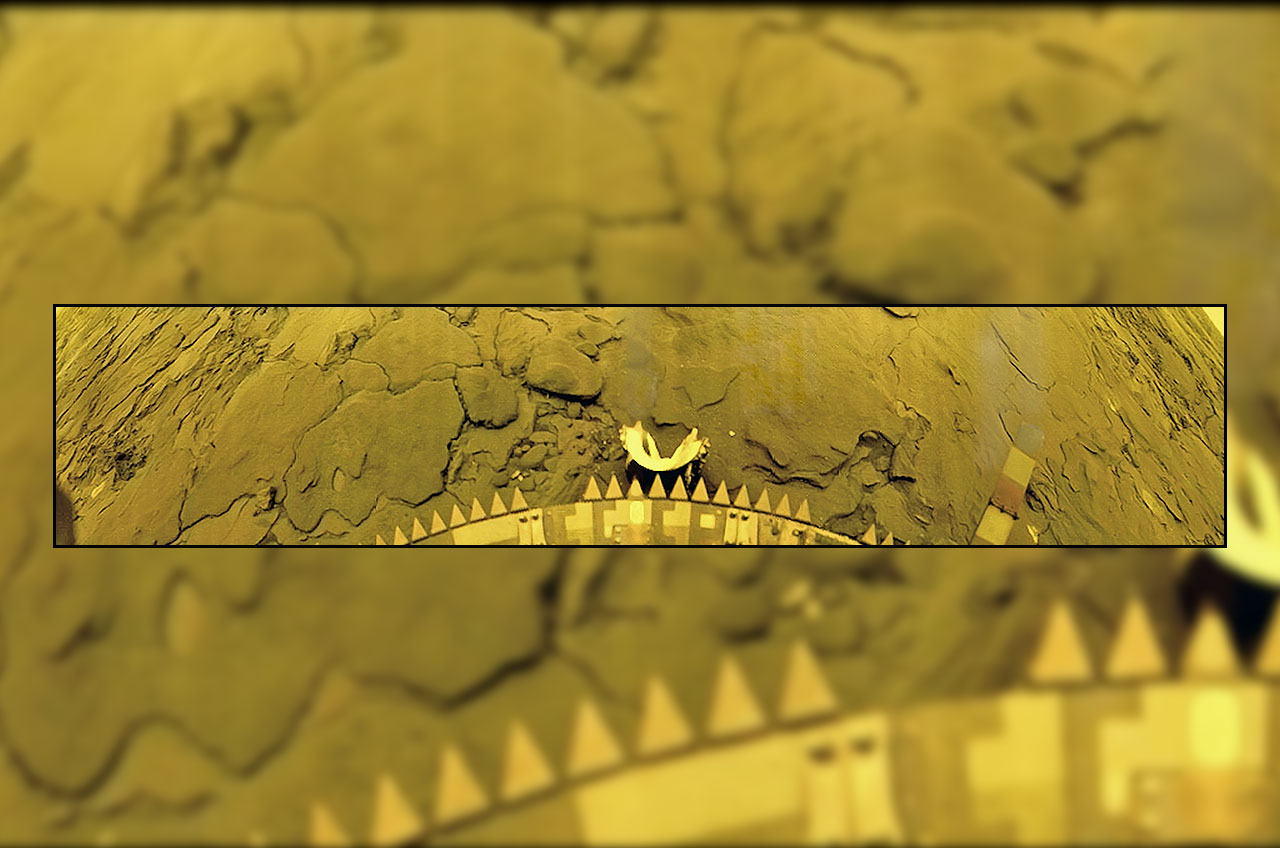See bright Venus climb to its highest point in the night sky tonight
The planet is in the midst of its evening appearances in the sky over Earth while it lies far enough to the east of the sun to be seen.

Venus, the second planet from the sun and the hottest world in the solar system, will rise to its highest point in the evening sky on Monday (May 8).
The hellish planet known as "Earth's evil twin" is currently in the period of its evening apparitions, a period during which Venus is seen each night. According to In the Sky, from New York City the evening apparition of Venus will reach a peak altitude of 37 degrees (nearly the width of four of your fists at arms' length) over the western horizon at sunset on May 8, which occurs at around 7:58 p.m. EDT (2358 GMT). The planet will then set at around 11:35 p.m. EDT (0335 GMT).
Venus will have a magnitude of around -4.2 during its evening appearance on Monday, with the minus prefix indicating a particularly bright object over Earth. The planet will have a right ascension of 06h01m10s and a declination of 26°04'N and will be in the Taurus constellation. Once you've found Venus, find Mars located not far above it.
Related: Venus: The scorching second planet from the sun

Looking for a telescope to observe Venus or anything else in the sky? We recommend the Celestron Astro Fi 102 as the top pick in our best beginner's telescope guide. Don't forget colored filters to make the details on planets stand out!
Despite the fact that Venus is Earth's next-door neighbor in the solar system and is quite bright, the planet can sometimes be tough to spot in the sky. This is because the proximity of Venus to the sun means the planet is often obscured by the glare of our star.
But as another result of being close to the sun, Venus can also become bright and visible in the night sky during select times, when it is the third brightest object in the skies after the sun and the moon. These periods happen when the planet is at its largest separation from the sun, or is at its "greatest elongation."
These apparitions of Venus happen roughly once every 1.6 years and alternate between occurring in the morning and evening skies.
Get the Space.com Newsletter
Breaking space news, the latest updates on rocket launches, skywatching events and more!
When Venus lies to the west of the sun it is referred to as being in its morning apparition. During this time, the planet rises and sets shortly before our star and appears just before sunrise.
When the planet is to the east of the sun, as it is now, it is known as being in its evening apparition. This means Venus rises and sets shortly after the sun and is visible in the early evening.

During both of its apparitions, Venus always reaches a maximum separation of around 48 degrees from the sun along a line in the sky called the ecliptic, which traces our star's progress through the constellations. This doesn't always coincide with the time it reaches its highest point in the sky, however.
During this period of evening apparitions, Venus will reach its maximum separation from the sun on Sunday, June 4, 2023, according to In the Sky. Yet Venus will be at its brightest three days later on July 7, 2023, when it has a magnitude of -4.7. This will also mark the point at which the planet once again begins to move back into the glare of the sun. By the end of July, the evening apparitions of Venus will come to an end with the planet beginning to set at around 25 minutes after the sun.
Skywatchers will get another chance to view the planet during 2023, however, as Venus becomes an early riser in mid-August as it begins its morning apparition period.
According to In the Sky Venus which will be to the west of the sun, will peak in brightness on Monday, Sept. 18, 2023, when it reaches a magnitude of -4.5, and it will be at its highest in the morning sky on Oct. 20, 2023, when it reaches an altitude of 20 degrees above the horizon.
Venus manages to be the hottest planet in the solar system despite not being as close to the sun as Mercury due to the fact that its thick atmosphere full of carbon dioxide traps heat and causes a runaway greenhouse effect. This drives surface temperatures so high that lead would melt on Venus. Making Venus even more inhospitable are dense clouds of sulfuric acid and winds that can reach speeds as great as 200 miles per hour.

If you hope to take a look at Venus close-up during its evening apparition, our guides to the best telescopes and best binoculars are a great place to start.
And for tips on photographing the night sky in general, check out our guide on how to photograph the moon and our rundowns on the best cameras for astrophotography and best lenses for astrophotography.
Editor's Note: If you snap an image of Venus, and would like to share it with Space.com's readers, send your photo(s), comments, and your name and location to spacephotos@space.com.
Join our Space Forums to keep talking space on the latest missions, night sky and more! And if you have a news tip, correction or comment, let us know at: community@space.com.

Robert Lea is a science journalist in the U.K. whose articles have been published in Physics World, New Scientist, Astronomy Magazine, All About Space, Newsweek and ZME Science. He also writes about science communication for Elsevier and the European Journal of Physics. Rob holds a bachelor of science degree in physics and astronomy from the U.K.’s Open University. Follow him on Twitter @sciencef1rst.









